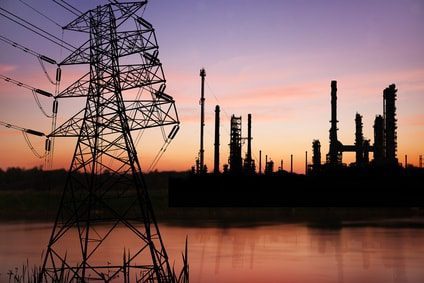5 Best Practices for Utility Asset Management and Tracking


Proper utility asset management allows utility companies to effectively service the nation’s energy and power needs. Any breakdown in this process brings the potential for catastrophic failures in the nation’s infrastructure.
We’re not talking about counting a few office supplies. Proper utility company asset tracking and management mean knowing what type of valves were placed in a waste management system and how old they are. It’s being aware of what wood pole structures energy companies need to replace after a natural or man-made disaster.
Proper utility asset management allows you to:
We’ve pulled together this list of five common best practices utility companies should follow for asset tracking and management. Why wouldn’t you want to do everything possible to lower the odds of a preventable system failure? Shortcuts in doing due diligence inevitably lead to disaster and a loss of trust by the public.

You can’t do anything to manage assets your company is unaware of. Can you currently answer these questions in relation to the assets at your facility?
Start answering these questions by putting together an inventory and systems map. You’ll need a rating system that identifies the current condition of that asset and how many more months or years you can expect it to last. Finally, work through how much it would cost to repair or replace the asset.
Tagging assets enables utility companies to more accurately monitor the condition of assets over their lifecycle and better manage preventive maintenance. There are numerous types of utility asset tags designed to suit specific application requirements. Choose durable utility asset tags capable of withstanding the harsh outdoor weather conditions many assets are exposed to.
What’s it going to take to keep your assets functioning at a high level? Look at the type of environment you’re in. Are you using materials suited to the local climate? Should more be done to provide reinforcements in areas where flooding or other natural threats factor in?
Consider any regulatory requirements of your local or state regulators. Is everything up to the standards required by those laws? Would company shareholders be pleased with the current level of maintenance being done? Are you putting the company’s future at risk by providing less-than-optimal service to various system elements?
Every asset presents its own failure risks. It’s up to you to understand what happens if and when a particular component fails. How long would it take to get the system up and running again without it? Is it something that can be worked around or will its collapse bring everything to a stand-still?

Take the time to organize components by the most to least critical based on these questions. Build out scenarios enacting what would happen if these items failed. How vulnerable is your utility to having one of these circumstances play out?
Most budgets should account for operational costs, maintenance, the level of personnel needed. You’re looking to achieve the lowest costs possible for the highest level of services. That doesn’t always mean finding the cheapest alternative. Investing more now in a more expensive version of a component could pay off in that piece holding up well during a time of crisis, saving you even more money down the line.
You want to improve your predictions and avoid constantly reacting to unforeseen events. Deploy your resources based on the condition of your assets.
Having a solid financial forecast helps you make decisions about changes beneficial to your utility’s long-term funding strategies. Is there sufficient funding available for the level of service you need? How sustainable is your rate structure for your system’s long-term needs?
Once you’ve done that, come up with an implementation plan for your utility asset management system. Make sure you keep track of what’s working, what can be changed, and account for and accommodate any factor you overlooked.
Keep up with new technological advances in your field. Don’t be afraid to make changes if you think your utility and its customers would benefit in the long run. Consistent follow-up is the key to making a management plan work.
Utility systems of every size should make the investment in a sound asset management and tracking process. Water utilities servicing 200 customers should feel just as much incentive to do this as those being relied upon by millions. Long-term planning puts your utility in position to face any natural or man-made challenge.
Our sales engineers are experts in automatic asset tracking, tagging and identification,a nd can answer all your questions. Get in touch now.
Lets Talk ›Enter your information and get a free checklist of the top questions to answer and tips to plan a successful asset tagging project for any asset management or tracking system implementation.